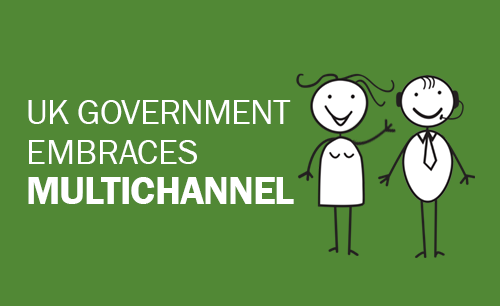UK government embraces multichannel

Customer service is critical for organisations across every industry. Consumers are now demanding the same high levels of service, whatever type of company they are dealing with. This means that they expect a utility or bank to provide a similar experience to a retailer – and are not shy at complaining if they don’t receive the service they want.
This equally applies to the public sector, with citizens and patients judging the service they receive by increasingly high standards. They want the same choice of channels as they would get from private companies, and the same speed of response and helpfulness. In the US 39% of citizens recently voted government as the worst sector when it comes to customer service, ahead of telecommunications and healthcare.
The UK public sector understands this and is moving to become more customer-centric. The Digital by Default agenda aims to put services online, which has the secondary benefit of reducing costs and increasing efficiency. This is helping to transform how public services are delivered, particularly in combination with the Government’s G-Cloud initiative, which allows the public sector to buy cloud-based services off the shelf, avoiding lock-in to expensive contracts with single suppliers, enabling cost-effective, innovative solutions.
Recent research highlights the change that is happening within the UK public sector. 67% of public sector customer service contracts, including those from local government, were for multichannel service support in 2014. This has moved up from 40% in 2013, according to the research from arvato and NelsonHall.
Essentially the UK public sector is embracing channels such as chat and social media, alongside email and the web to deliver a better experience. Given that an estimated 11.5% of customer contact is expected to be through social media this year, the priority for councils and other public bodies is to deliver service on the customer’s channel of choice. So how do they achieve this? Here are three areas to focus on:
1. Integrate your knowledge
Delivering inconsistent answers across different answers is inefficient, annoys citizens and patients and forces them to make contact again to check they have received the right information. By using a single, centralised knowledgebase that is accessible by agents and through the web, public sector organisations can ensure they give the same answer to common queries, helping improve engagement and reduce costs.
2. Embrace self-service
Citizens want answers 24 hours a day, but are increasingly happy to find out information for themselves. Public sector organisations therefore need to ensure they have installed self-service systems that provide web-based answers to common questions, and also give citizens the ability to log on and manage their accounts online. Security and privacy is obviously critical, but by allowing citizens to serve themselves, councils and other bodies can improve customer service while increasing efficiency.
3. Meet your customers’ targets
Citizens judge the public sector by the same standards as retailers, banks and utilities. Therefore organisations need to make sure that they both embrace new channels, but also provide sufficient resources to respond quickly and accurately to queries. It is pointless to launch channels such as social media and then fail to respond to a tweet or to take two weeks to answer an email. The key to this is to set realistic targets and then ensure you have the ability to monitor performance, focus on areas that need development and continually improve the service you provide.
The Digital by Default agenda promises to transform the relationship between the public sector and the users of its services, and deliver major efficiency benefits. What is critical is that public sector organisations ensure that they think like the private sector, and put the customer experience at the heart of everything they do.






